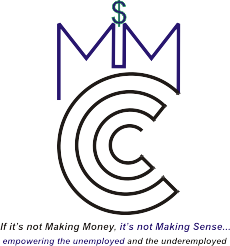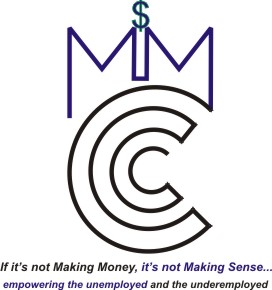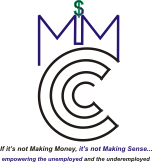How to Become an Investor in Business (10 steps Strategy)
In the dynamic world of business, becoming an investor is a pathway filled with opportunities and challenges. This article aims to demystify the process and offer a step-by-step guide for aspiring investors. Understanding the role of an investor and navigating through the complexities of the investment landscape is crucial. Our focus is to provide a thorough and updated guide that not only defines the role of an investor but also outlines practical steps to embark on this journey successfully.
Who is an Investor?
An investor is an individual or entity that allocates capital with the expectation of a financial return. The avenues for investment are diverse, ranging from the stock market to real estate, and each comes with its own set of risks and rewards. Investors differ in their risk tolerance, with some preferring high-risk, high-reward scenarios, while others opt for more stable and lower-risk investments. Understanding these nuances is key to becoming a successful investor.
10 Essential Steps to Become a Successful Investor
- Self-Preparation: (Laying the Groundwork) Before embarking on your investment journey, it’s crucial to prepare mentally and financially. This involves introspection, understanding your financial goals, and assessing your risk tolerance. Remember the old adage, “Failing to plan is planning to fail.” Effective preparation sets the foundation for success.
- Market Research: (Understanding Trends) Investing is not a one-size-fits-all venture. It’s important to conduct thorough market research to understand current trends and successful strategies. This step involves delving into market reports, financial news, and studying the success stories of established investors. Gaining insight into market dynamics is indispensable for making informed decisions.
- Defining Your Investment Strategy: Your investment strategy should be a reflection of your financial goals and risk appetite. It’s essential to develop a clear plan, whether you’re inclined towards aggressive growth strategies or a more conservative approach. Understanding different investment styles – from value investing to growth investing – is crucial in this step.
- Identifying Allies and Adversaries in the Investment World: As an investor, it’s crucial to be aware of the competitive landscape. This includes identifying who your allies are and who might be less favorable toward your investment goals. However, it’s important not to be deterred by competition or negativity; instead, focus on building a network of supportive and knowledgeable individuals who can guide and assist you in your investment journey.
- Choosing the Right Investment Path: Investment involves risks, and it’s vital to choose a path that aligns with your risk tolerance and financial objectives. This might mean diversifying your portfolio across different asset classes or focusing on a specific sector. The key is to make well-informed decisions and avoid putting all your financial resources in one investment basket.
- Consistency in Strategy: Successful investing requires consistency and discipline. Stick to your chosen strategy and avoid frequent shifts in approach, as this can lead to miscalculations and missed opportunities. A consistent strategy also helps in building a reliable investment portfolio over time.
- Continuous Learning and Adaptation: The investment landscape is ever-evolving, and as such, continuous learning is non-negotiable. Stay updated with the latest market trends, economic news, and investment techniques. Attending workshops, enrolling in finance courses, and consulting with financial advisors can provide you with fresh insights and keep your investment strategies relevant.
- Maintaining Focus and Resilience: Investing is not just a financial venture; it’s also a test of patience and focus. It’s important to stay committed to your goals and not be swayed by short-term market fluctuations or unfounded advice. Resilience in the face of challenges and a focused approach will serve you well in the long term.
- Understanding Financial Instruments and Markets: This section delves into the various financial instruments available to investors, such as stocks, bonds, ETFs, and mutual funds. It also covers the basics of how different markets operate, including the stock market, bond market, and commodity markets. This knowledge is crucial for making informed investment choices.
- Risk Management and Diversification: Investment always involves some level of risk. This part of the article focuses on strategies for managing risk, including the importance of diversification across different asset classes. It explains how a well-diversified portfolio can help mitigate risk and smooth out investment returns over time.
Advanced Investment Strategies
Let me quickly give you two advance investment strategies you need to know below.
Analyzing Market Trends and Economic Indicators
For those looking to deepen their investment knowledge, this section covers the analysis of market trends and economic indicators. It includes an overview of fundamental and technical analysis, and how these tools can be used to make better investment decisions. It also discusses the importance of staying updated with global economic news and its impact on investments.
Leveraging Technology in Investing
Technology plays a significant role in modern investing. This part explores various technological tools available to investors, such as investment apps, robo-advisors, and online trading platforms. It also touches on the emerging trends in fintech and how they are shaping the future of investing.
Conclusion
Investing in business is a journey that comes with its own set of risks and rewards. It’s imperative to approach this journey with a well-thought-out plan, a clear understanding of the market, and an adaptable mindset. Whether you’re investing in stocks, real estate, or emerging technologies, the key to success lies in informed decision-making, consistent strategy, and continuous learning.
As you embark on your investment journey, remember that every step you take should be aligned with your overall financial goals and risk tolerance. Stay vigilant against potential scams and fraudulent schemes, always conduct thorough due diligence before making any investment.
We hope this article has provided you with valuable insights and actionable steps to become a successful investor in today’s business world. If you have further questions or need more specific advice, feel free to leave a comment or reach out to financial experts for personalized guidance.
Thank you for reading, and here’s to your success as an investor!







